Jehe Technology Development MIH55 Mother Board User Manual Giada MI H55 part1 REV1
Shenzhen jiehe Technology Development Co.,Ltd. Mother Board Giada MI H55 part1 REV1
Contents
- 1. Giada MI-H55_User Manual_part1_REV1
- 2. Giada MI-H55_User Manual_part2_REV1
Giada MI-H55_User Manual_part1_REV1

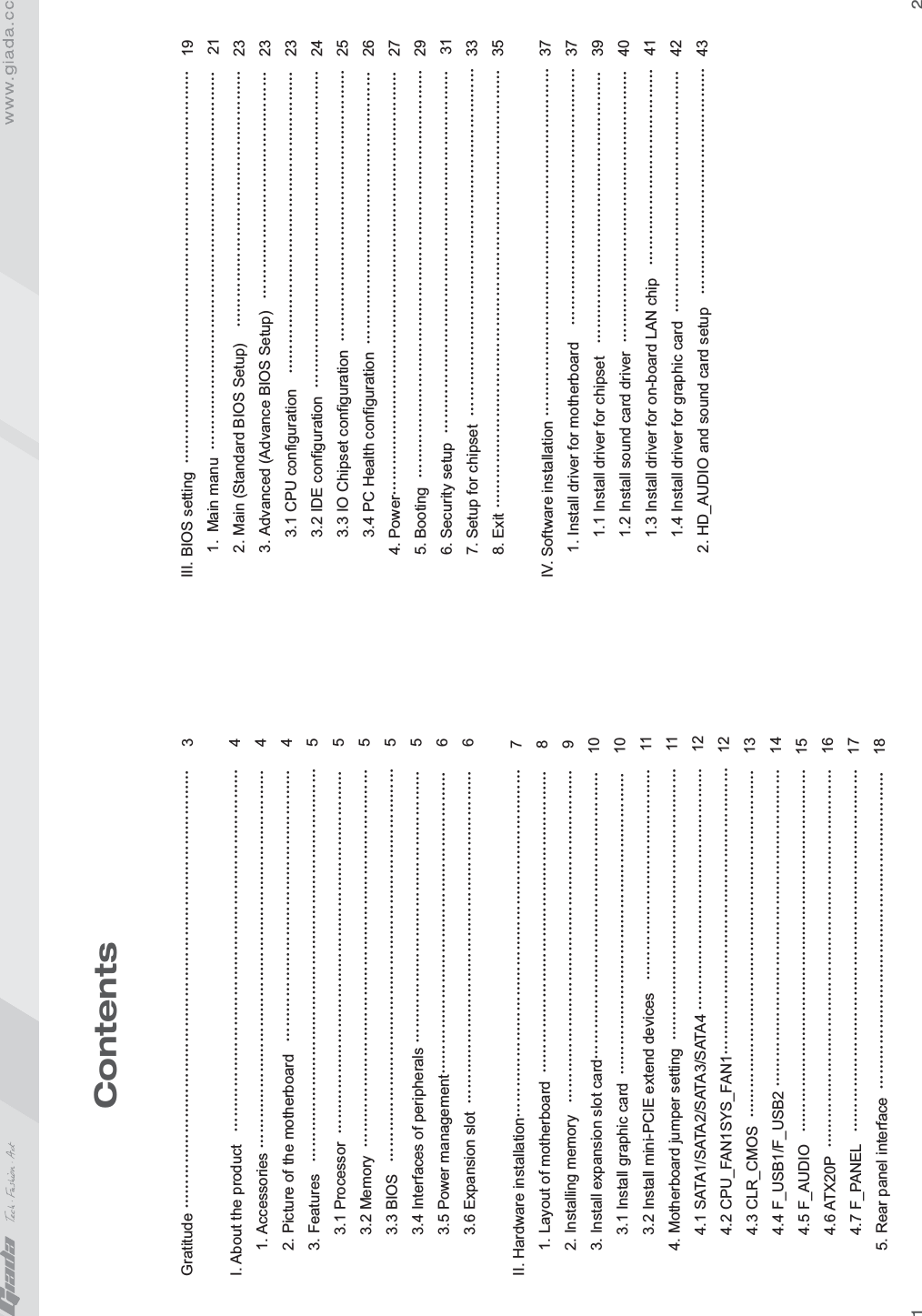
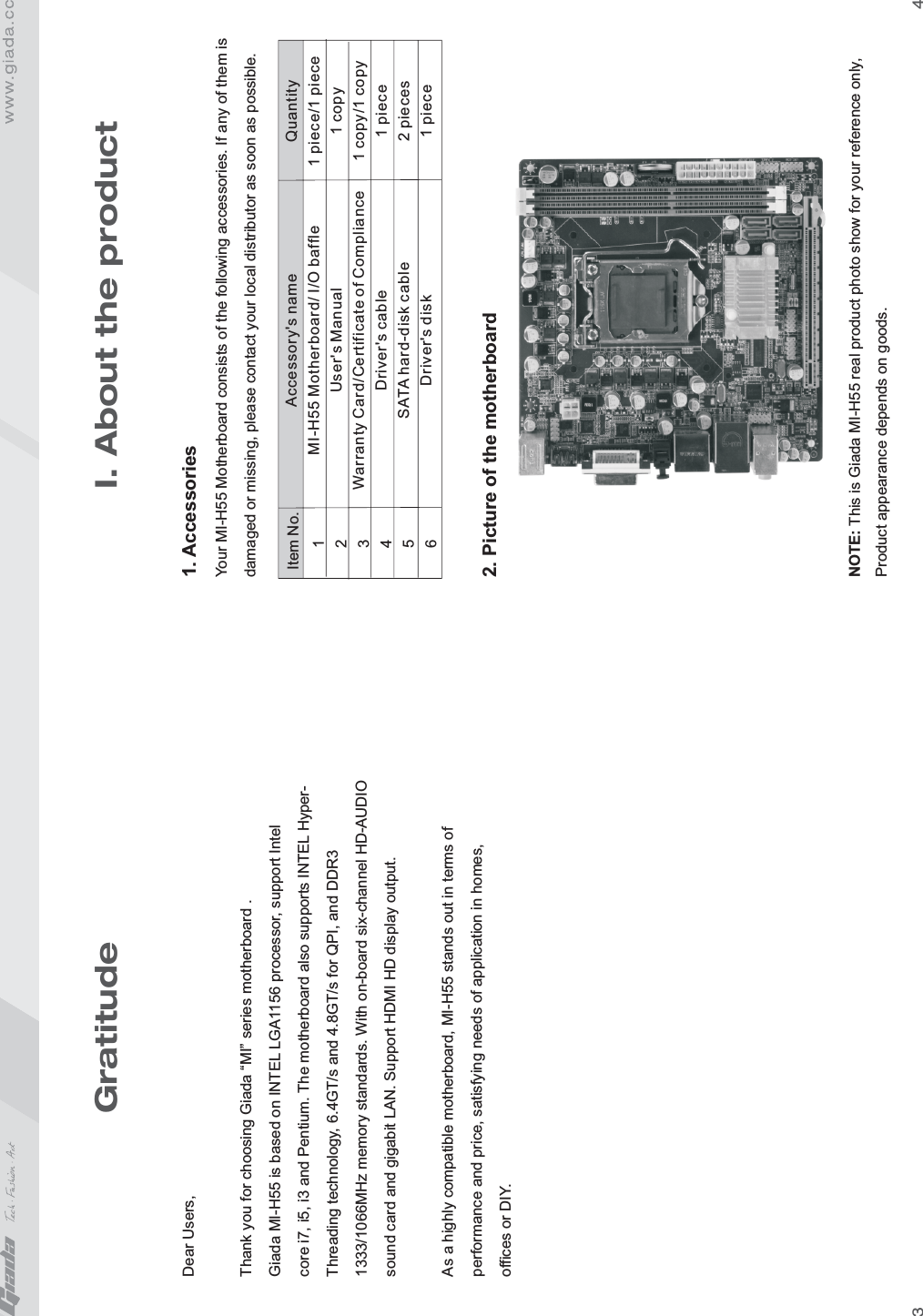
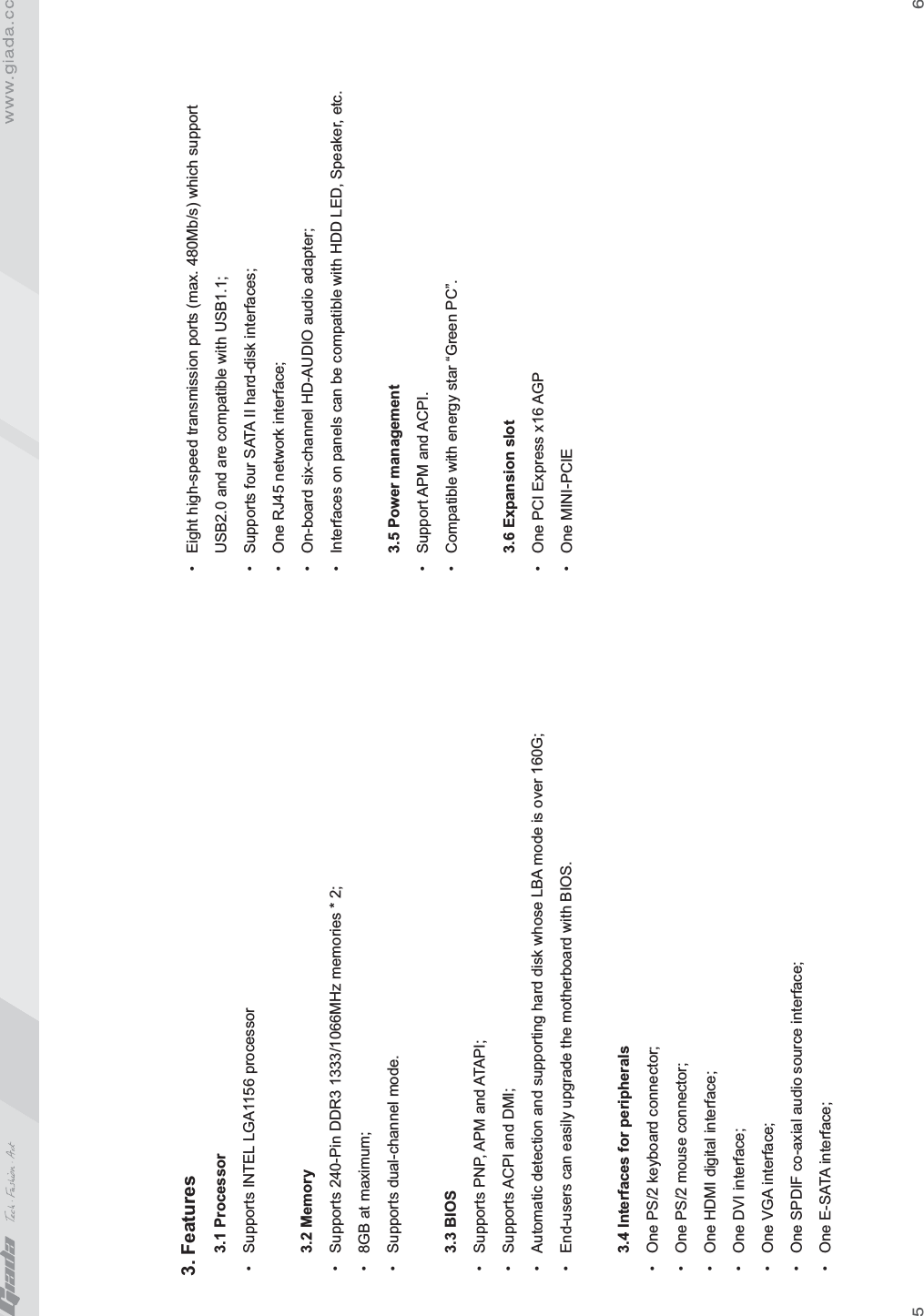
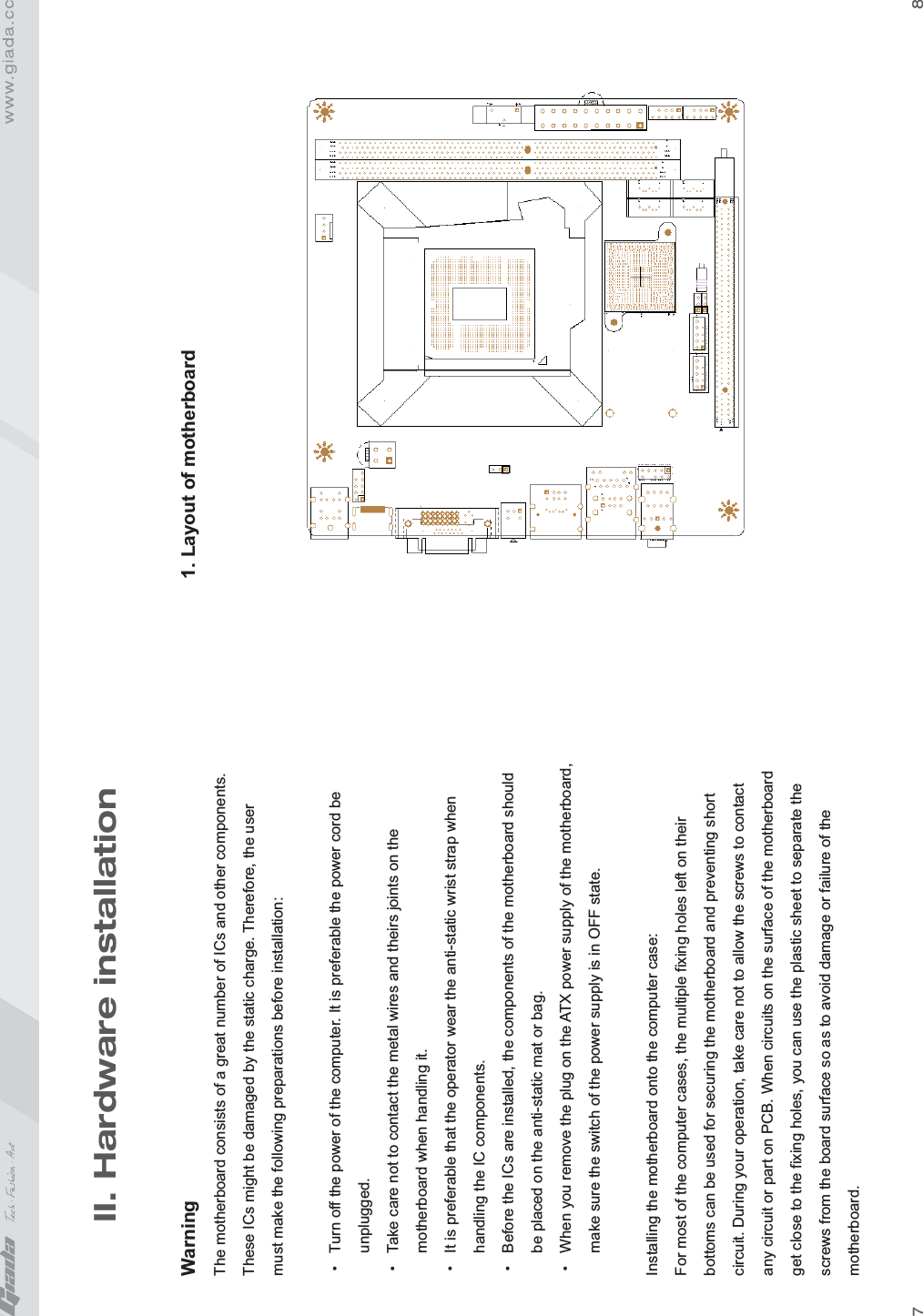
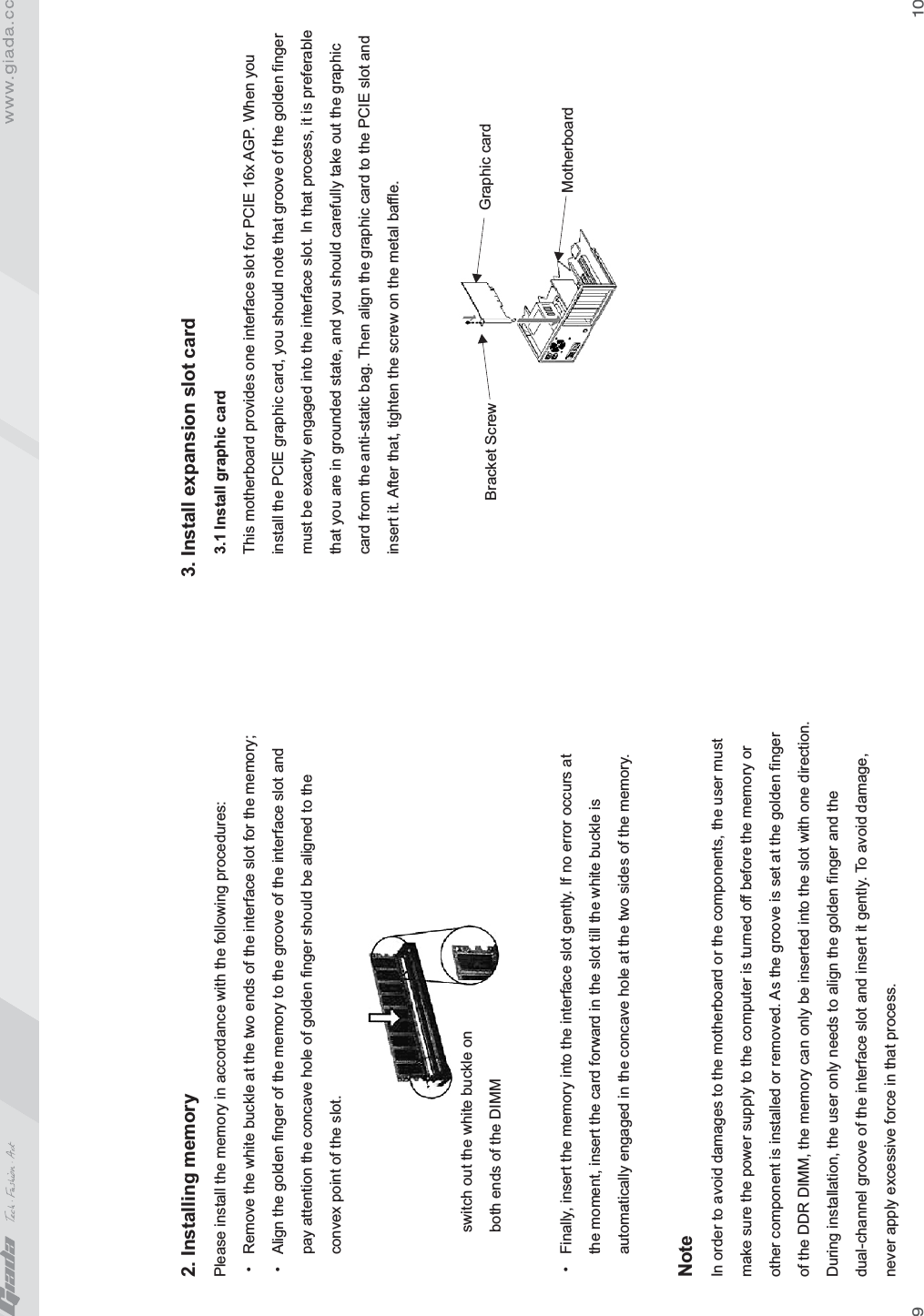
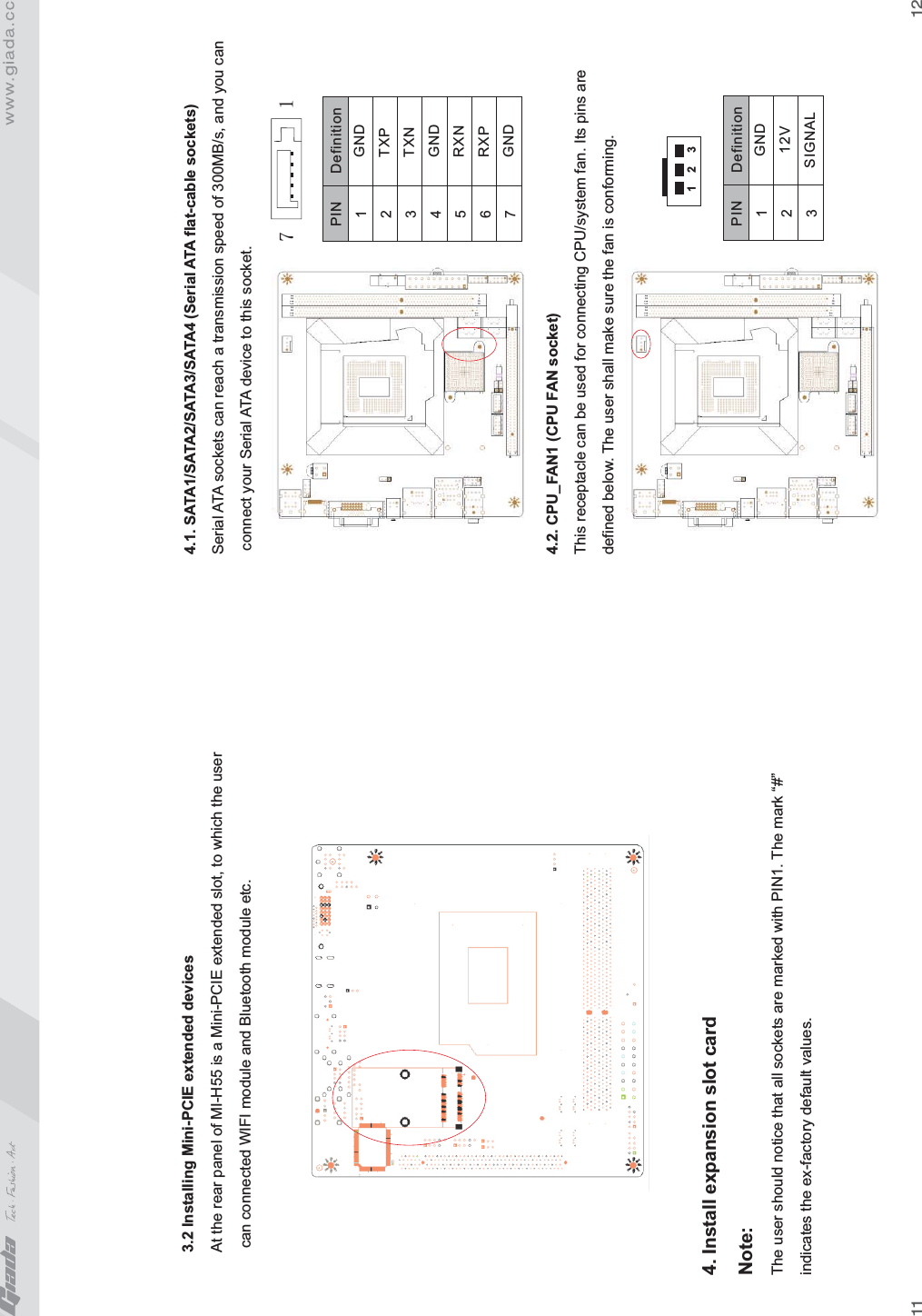
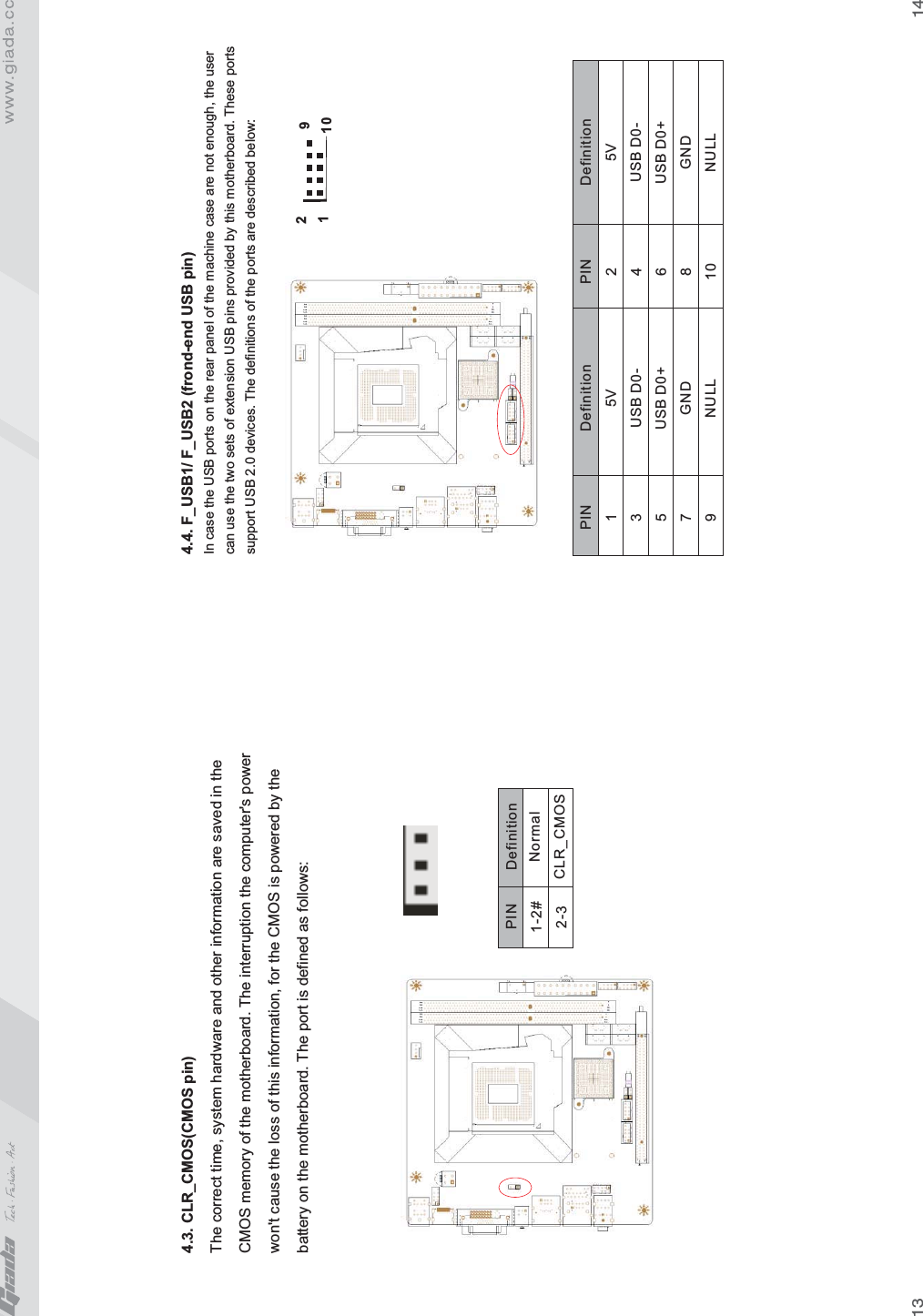
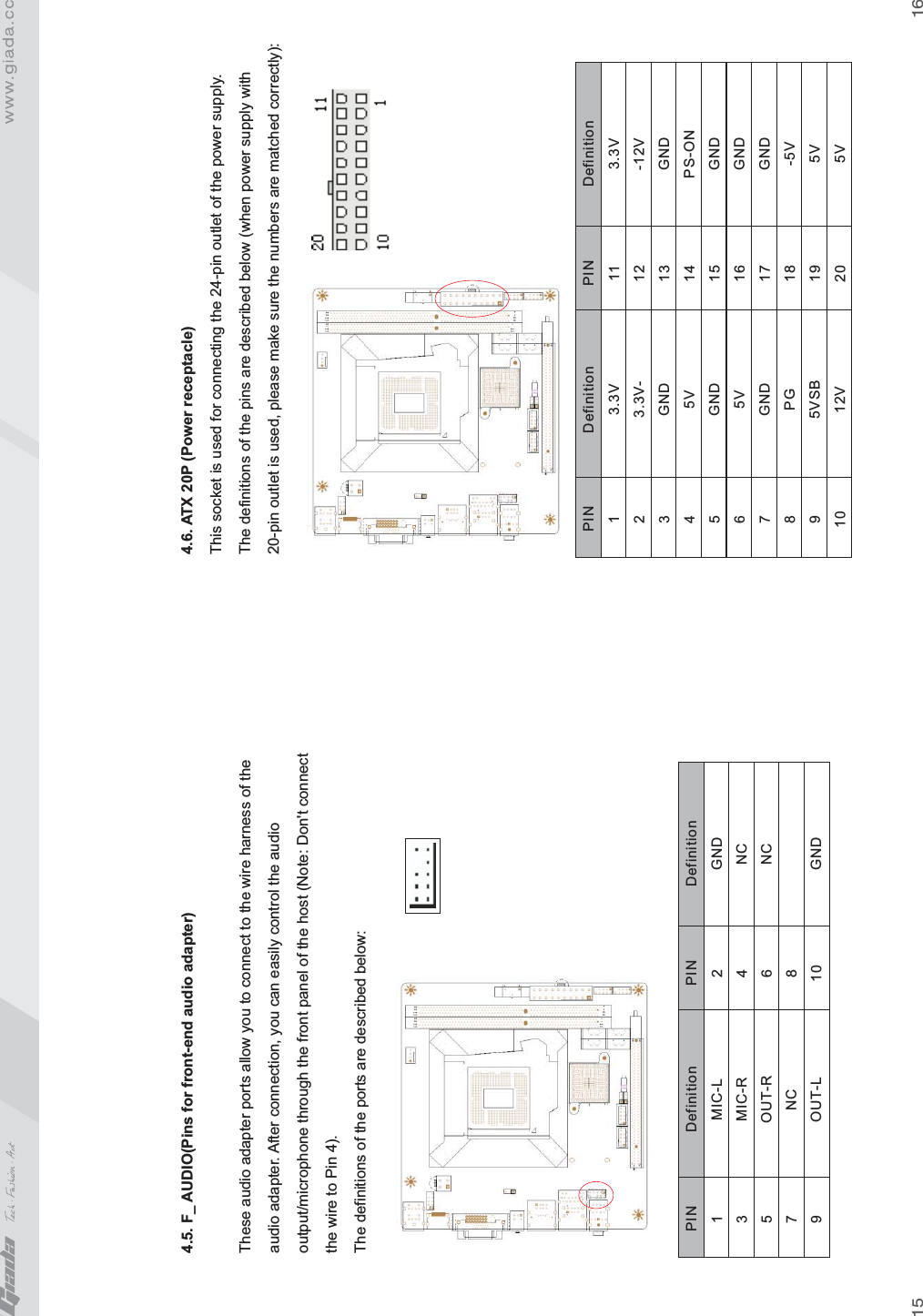
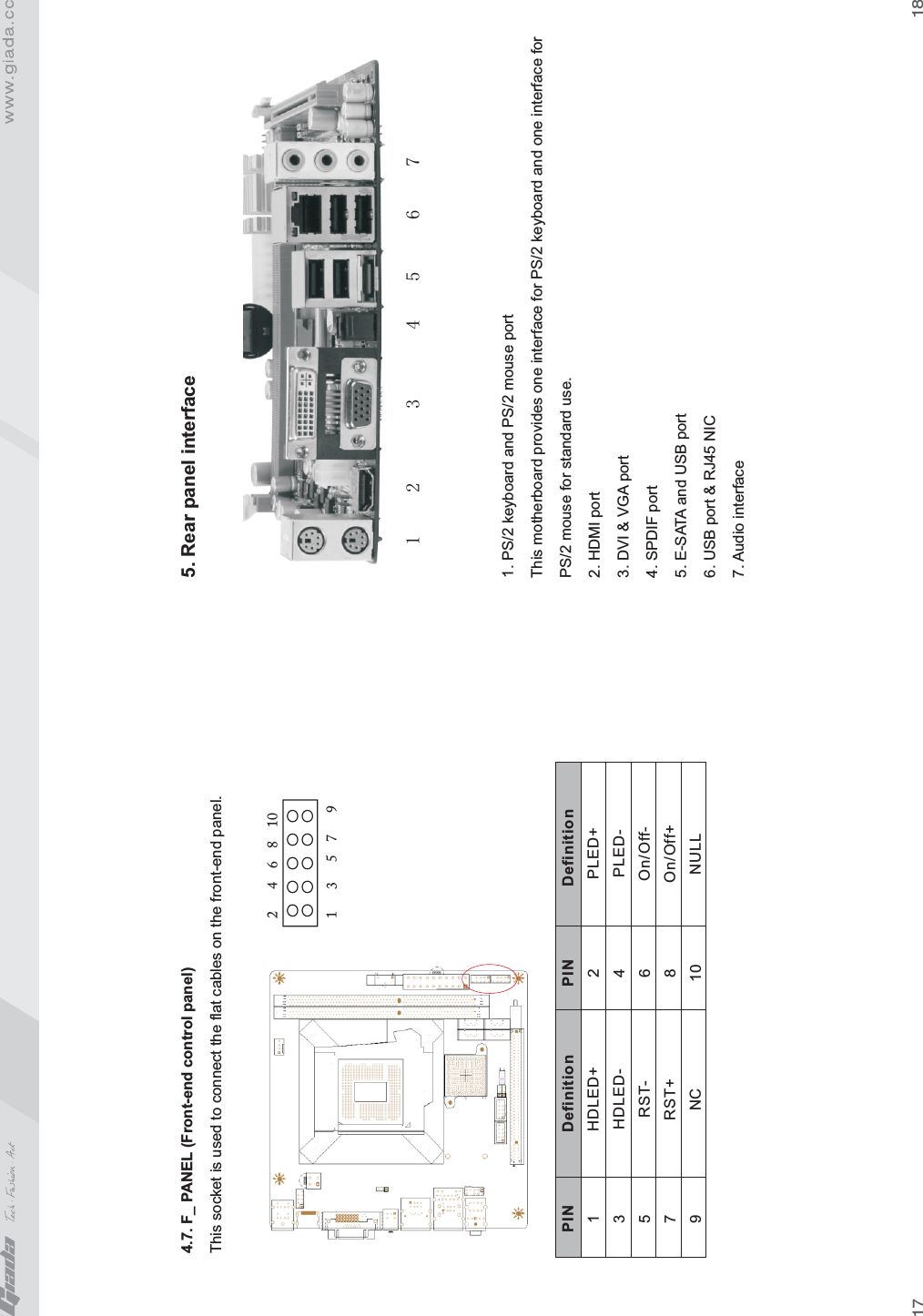
![2019III. BIOS SettingNoteThe descriptions relating to BIOS in this Manual can only be used for reference as the BIOS version of the motherboard is upgraded continuously. Giada provides no guarantee that the contents in this Manual be consistent with the information you acquire.BIOS is a basic I/O control program saved in the Flash Memory. Bridging the motherboard and the operating system, BIOS is used for managing the setup of the related parameters between them. When the computer is activated, the system is first controlled by the BIOS program. First, a self-detection called POST is performed to check all hard devices and confirm the parameters of the synchronous hardware. Once all detections are completed, BIOS will hand over the controlling to the operating system (OS). As BIOS serves as the only channel that connects the hardware and software, whether your computer can run stably and work in optimized state will hinge on how to properly set the parameters in BIOS. Therefore, the correct setup of BIOS plays a key role in stably running the system and optimizing its performance.The CMOS Setup will save the set parameters in the built-in CMOS SRAM on the motherboard. When the power is shut off, the lithium battery on the motherboard will provide continuously power for CMOS SRAM. The BIOS setup program will allow you to configure the following items:1.HD drive, floppy drive and peripheral devices;2.Video display type and display items;3.Password protection;4.Power management characteristics. A.State of BIOS SetupWhen the computer is started up, BIOS will run the self-detection (Post) program. This program includes series of diagnosis fixed in BIOS. When this program is executed, the following information will appear if any error is found:Press F1 to Run SetupPress F 2 to Load default values and continueKey↑ (Up key)↓ (Down key)← (Left key)→ (Right key)ESC Page UpPage DownF1F7F8F9F10FunctionMove to the previous item Move to the next itemMove to the left itemMove to the right itemExit the current interfaceChange the setup state, or add the valuesChange the setup state, or deduct the valuesDisplay the information of the current setupLoad the set values of previous timeLoad the safest valuesLoad the optimized valuesSave the settings and exit the CMOS SETUP C.Auxiliary informationMain interfaceWhen the system enters the main interface of Setup, the major selected contents will be displayed at the lower part of the interface with the change of the options.Set interfaceWhen you set the value for each column, you can view the preset value of the column and the values that can be set if you press F1, for example, the BIOS default values or CMOS Setup values. To exit the interface for auxiliary information, press [ESC].To enter BIOS, you can press F1; to load the default values and enter the system, you can press F2. After the self-detection process is completed, you can press DEL to enter the BIOS interface if no error is found. If the indicative information disappears before you can act, you can shut off the computer and turn on it again, or you can press the key RESET on the machine case. To restart your computer, you can also simultaneously press <Ctrl>+<Alt>+<Delete>.B. Function Keys definitions](https://usermanual.wiki/Jehe-Technology-Development/MIH55.Giada-MI-H55-User-Manual-part1-REV1/User-Guide-1317489-Page-11.png)
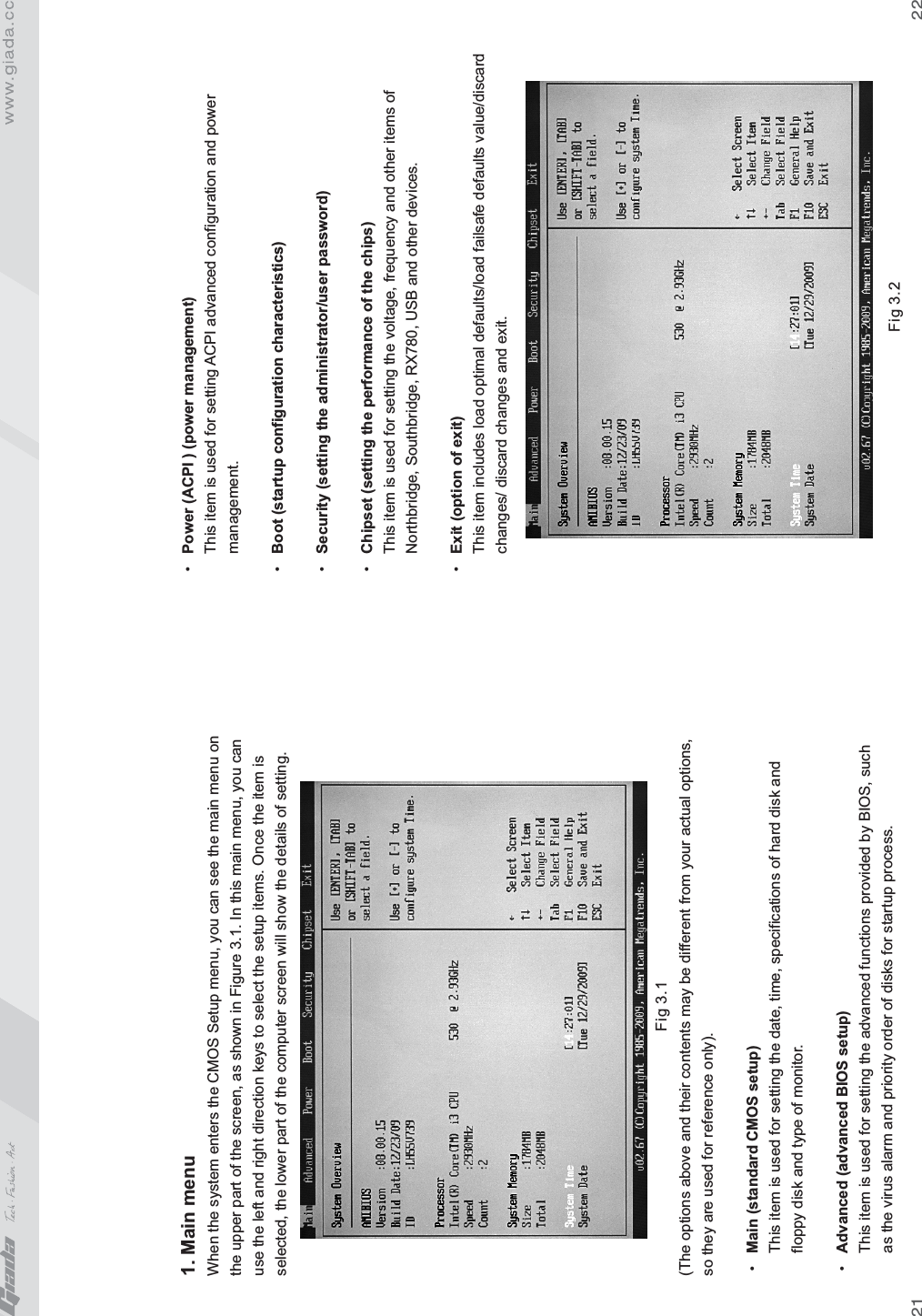
![24232. Main (standard CMOS setup)· System time (hh:mm:ss) Use this item to set the time for the computer, with the format as “hour/minute/second”.· System date (mm:dd:yy) Use this item to set the date for the computer, with the format as “week, month/day/year”.3. Advanced (Advanced BIOS setup) 3.1.CPU Configuration Fig 3.3 3.2 IDE Configuration · Hard Disk Write Protect This item is used for enabling or disabling the function of “write-protect”, and can only be effective when the device is accessed via BIOS.· IDE Detect time out (Sec) This item is used for setting the time in which the system should wait for automatic detection of ATA/ATAPI device. The options are: [0], [5], [10], [15], [20], [25], [30] and [35].Fig 3.4](https://usermanual.wiki/Jehe-Technology-Development/MIH55.Giada-MI-H55-User-Manual-part1-REV1/User-Guide-1317489-Page-13.png)